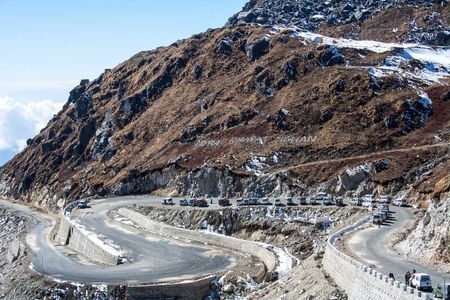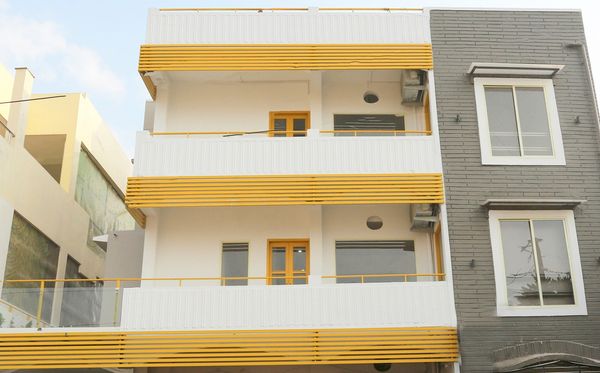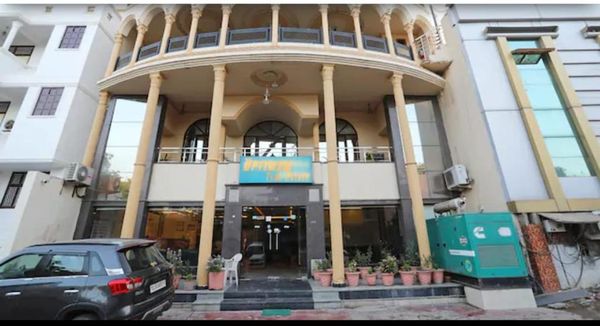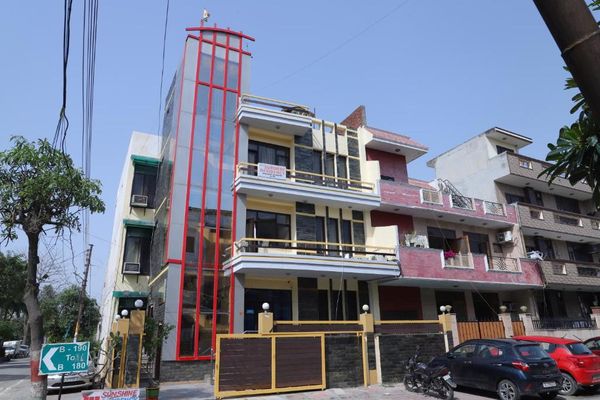Nathula Pass: The Gateway to Sikkim’s Majestic Border
 Shivam Kumar
10 Jan, 2025
9 mins read
1021
Shivam Kumar
10 Jan, 2025
9 mins read
1021

Situated at an altitude of 14,140 feet in the Eastern Himalayas, Nathula Pass is one of the most breathtaking and significant mountain passes in India. Nestled on the Indo-China border, this pass serves as an important link between India and Tibet, making it not only a popular tourist destination but also a crucial point for cross-border trade. With its snow-capped peaks, picturesque landscapes, and rich historical and military significance, Nathula Pass is a must-visit for travelers seeking adventure, culture, and a touch of history.
Nathula Pass Sikkim: The Mountain Gateway
Nathula Pass is located in the northeastern state of Sikkim, one of India’s most stunning and diverse regions. It connects the town of Gangtok (the capital of Sikkim) to the Chumbi Valley in Tibet, China. Nathula, which means "listening ears" in Tibetan, was historically an important route for the movement of goods between India and Tibet. The pass is renowned not only for its high altitude but also for the captivating views it offers of the surrounding mountains, valleys, and rivers.
The pass is open to tourists, though there are restrictions in place due to its proximity to the sensitive Indo-China border. Visitors can access Nathula via a special permit granted by the Indian authorities, and the journey often requires traveling with a guided tour. The landscape is dominated by steep slopes, alpine meadows, and stunning views of the Kanchenjunga, the third-highest peak in the world, as well as snow-covered peaks in the region.
Nathula Pass Border: India’s Strategic Link
Nathula Pass is not just a scenic spot; it holds immense strategic and military significance. It forms part of the Indo-China border, which is a heavily guarded and controlled area. The pass lies near the Nathu La Pass in Tibet, historically serving as a vital trade route between India and China. However, after the Sino-Indian war of 1962, the pass was closed for several decades, and it wasn’t until 2006 that the pass was reopened for trade once more.
Today, the Nathula Pass border remains one of the most sensitive borders in the world. It is closely monitored by both the Indian Army and Chinese forces. However, despite the sensitive nature of the region, the pass is now open for controlled tourism, and visitors can witness the high-security zones and learn about the historical significance of the border.
While visiting Nathula Pass, tourists can also observe the Border Personnel Meeting (BPM) point, where Indian and Chinese soldiers occasionally meet for discussions and camaraderie. This unique aspect of the visit offers a rare glimpse into the friendship and cooperation between the two nations, despite their geopolitical complexities.
Baba Mandir Nathula Pass: The Spiritual Legacy
One of the most fascinating aspects of Nathula Pass is the presence of the Baba Mandir, a revered shrine located en route to the pass. The temple is dedicated to Baba Harbhajan Singh, an Indian soldier who is believed to have sacrificed his life during the Sino-Indian War of 1962. According to local folklore, after his death, Baba Harbhajan Singh's spirit is said to have appeared to his fellow soldiers, guiding them and protecting the border area.
Baba Harbhajan Singh’s story has become legendary among the army personnel stationed at Nathula. The Baba Mandir Nathula Pass is a place of great reverence, not just for the Indian Army but for tourists who visit the region. The temple, located at a height of 13,000 feet, has a tranquil, spiritual atmosphere, and it serves as a symbol of the sacrifices made by soldiers in defending the country’s borders.
The shrine is maintained by the Indian Army, and it is a point of pride for locals and soldiers alike. Pilgrims and tourists who visit the temple often leave offerings of flowers, coins, and other items as a tribute to Baba Harbhajan Singh’s memory and his spirit of protection. The temple’s location in the high-altitude landscape adds to its mystique, with its surroundings blanketed in snow for much of the year.
Visiting Nathula Pass: Tips and Guidelines
Given the high-altitude location of Nathula Pass and its proximity to the Indo-China border, there are certain guidelines and precautions to consider before visiting:
- Permits: Visitors must obtain a special permit to visit Nathula Pass. These permits are issued by the Indian Army and can be arranged through registered travel agencies in Gangtok. The permits are usually granted for a small group of tourists and are subject to approval based on security clearance.
- Health and Safety: Due to its high altitude, tourists visiting Nathula Pass should be prepared for the effects of altitude sickness, including headaches and shortness of breath. It is advisable to acclimatize in Gangtok for a day or two before making the journey to the pass. Carrying essential medication for altitude sickness, staying hydrated, and avoiding overexertion are important safety precautions.
- Weather Conditions: The weather at Nathula Pass can be unpredictable and harsh, with temperatures often dropping below freezing, especially in winter. Snow, fog, and winds can make travel conditions difficult, so it’s important to check the weather forecast before traveling. Warm clothing, sturdy footwear, and a good-quality jacket are essential for a visit to this area.
- Traveling with a Guide: It is advisable to travel with a licensed tour guide or as part of an organized tour. Guides are well-versed in the region's history, geography, and cultural significance, and they will ensure that tourists stay safe while abiding by the rules.
- Timing: Nathula Pass is typically open for tourists only on specific days of the week (often Wednesday to Sunday), and it is closed during certain months of the year due to harsh weather conditions. Plan your trip accordingly and make sure to confirm the accessibility before making arrangements.
How to Reach Nathula Pass
The nearest major city to Nathula Pass is Gangtok, the capital of Sikkim, which is about 56 kilometers away from the pass. The journey from Gangtok to Nathula Pass takes around 3-4 hours by road, with a scenic drive through winding mountain roads. Private taxis, shared vehicles, and organized tours are common modes of transport for reaching the pass.
Once in Gangtok, visitors can also explore the nearby attractions, such as Tsongmo Lake (Changu Lake) and Baba Mandir, before heading to Nathula Pass. Since the pass is a high-altitude destination, it is recommended to plan for an extra day in Gangtok for acclimatization.
Conclusion
Nathula Pass, with its awe-inspiring views, historical significance, and spiritual presence through Baba Mandir, is one of India’s most remarkable border destinations. Offering a glimpse into the high-altitude frontier of India and China, Nathula Pass is a place where nature, history, and spirituality converge. Whether you are a history buff, an adventure enthusiast, or a spiritual seeker, Nathula Pass and its surrounding attractions will leave you with a sense of awe and reverence. For those visiting Sikkim, a trip to Nathula Pass is an unforgettable experience, allowing you to witness the beauty and significance of India’s border areas up close.
Written By:
Shivam Kumar



Hotels at your convenience
Now choose your stay according to your preference. From finding a place for your dream destination or a mere weekend getaway to business accommodations or brief stay, we have got you covered. Explore hotels as per your mood.





